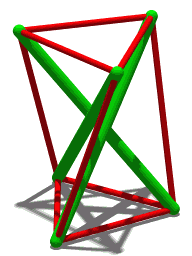
Photo from wikipedia
Mechanical-electrical properties of macroscopic graphene films derived from graphene oxide (GO) sheets are substantially restricted by their surface wrinkles and structural misalignment. Herein, we propose a chemical-structure-engineering strategy to realize… Click to show full abstract
Mechanical-electrical properties of macroscopic graphene films derived from graphene oxide (GO) sheets are substantially restricted by their surface wrinkles and structural misalignment. Herein, we propose a chemical-structure-engineering strategy to realize the spontaneously regular stacking of modified GO (GO-m) with trace carboxyl. The highly aligned GO-m film delivers a fracture strength and modulus of nearly 3- and 5-fold higher than a wrinkled film with conventional Hummer's method derived GO (GO-c). The favorable assembly pattern of GO-m sheets is attributed to their decreased interfacial friction on the atomic scale, which weakens their local gelation capability for freer configuration adjustment during the assembly process. The chemical structure of GO-m can be further engineered by an epoxide-to-hydroxyl reaction, achieving a record high tensile strength of up to 631 MPa for the pristine GO film. By exploring the relationship between the surface terminations of GO and its stacking mode, this work proves the feasibility to realize high-performance macroscopic materials with optimized microstructure through the chemical modulation of nanosheet assembly.
Journal Title: ACS nano
Year Published: 2022
Link to full text (if available)
Share on Social Media: Sign Up to like & get
recommendations!